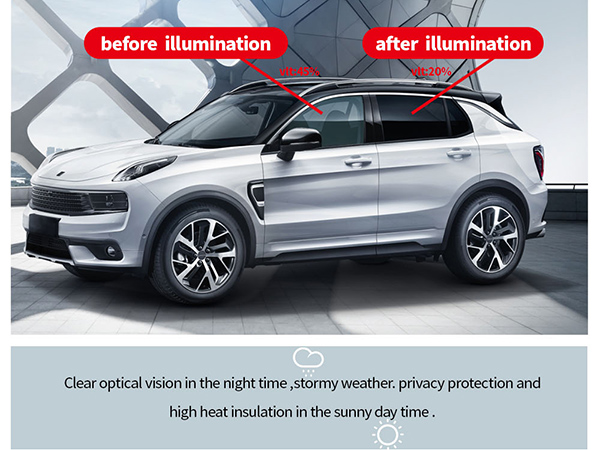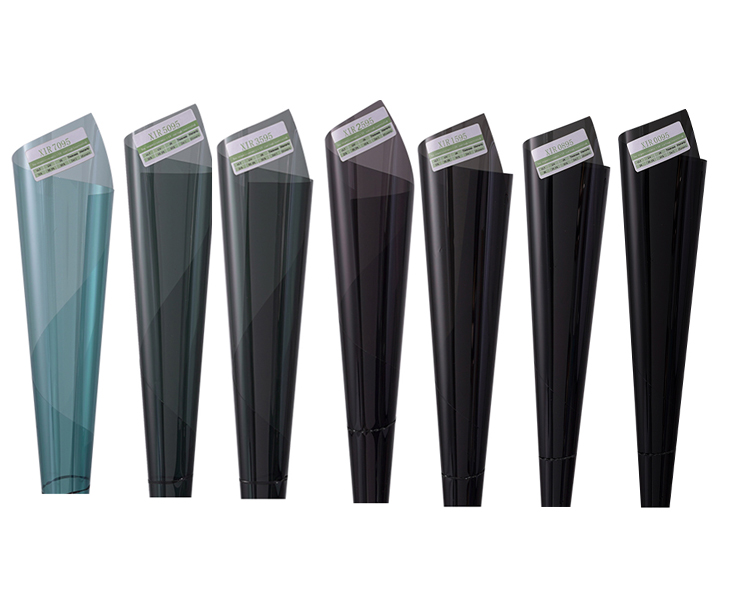Photochromic window film is a new product in the solar film industry. However, you may already be familiar with the technology, because some eyewear is already made with photochromic lenses. They transition from being light to dark when activated by light. The light must be intense enough and typically have enough ultraviolet radiation in order for the photochromic lenses to react. And vice versa, when the light that activated the lenses disappears or isn’t intense enough, the lenses will return to their clear or reduced-tinted state again.
Similar to the way photochromic eyewear transitions, photochromic window film darkens when activated by sunlight. It then returns to its clear state when it’s dark or the sun is less intense. As the film darkens when activated, the amount of light that filters through the film reduces and the amount of heat that it rejects increases.
Although very thin and often transparent, numerous micro-layers of polyester material make up the film. How does photochromic window film differ from other window films? It contains a special layer that chemically reacts when exposed to sunlight.

These transitional window films can typically darken anywhere from 25 to 70 percent. When activated, they can significantly block the majority of both the sun’s harmful UV rays and its heat-producing infrared light. Additionally, it reduces annoying glare.
The greatest benefit from this type of film is that it provides the maximum sun and temperature control at times when it is needed the most. But at night or when it’s cloudy or rainy outside, windows remain clear to provide the best views and to reduce your need for using artificial interior lights. This also conserves energy.

